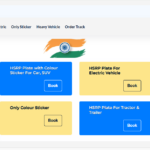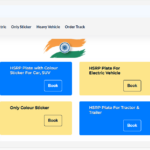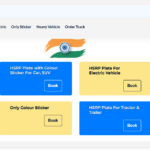Buying property isn’t just about choosing the right home and arranging the money — there’s a fair share of paperwork too. If your property value is ₹50 lakh or more, you’re bound to deal with Form 26QB and Form 16B. Many buyers confuse the two, but understanding the difference is vital to stay compliant and avoid penalties.
Overview of TDS on Sale of Property
As per Section 194-IA of the Income Tax Act, the buyer must deduct 1% TDS on the sale consideration when purchasing a property worth ₹50 lakh or more. This TDS must then be reported and paid to the government. That’s where Form 26QB and Form 16B come into play.
What is Form 26QB?
Purpose of Form 26QB
Form 26QB is a TDS payment-cum-return form. It captures the details of the transaction, buyer, and seller, and allows you to pay the deducted TDS amount directly to the government.
When and Who Should File Form 26QB?
-
Filed by the buyer after deducting TDS.
-
Must be submitted within 30 days from the end of the month in which the payment to the seller was made.
What is Form 16B?
Purpose of Form 16B
Form 16B is a TDS certificate that the buyer provides to the seller after deducting and depositing the TDS. It acts as proof that the seller’s TDS has been paid.
Who Issues Form 16B and to Whom?
-
Issued by the buyer.
-
Given to the seller.
-
Downloaded from the TRACES portal after Form 26QB is filed and payment is made.
Key Differences Between Form 26QB and Form 16B
Filing Purpose
-
Form 26QB: For reporting and paying the deducted TDS to the government.
-
Form 16B: For certifying that TDS has been deducted and paid.
Timeline and Deadlines
-
Form 26QB: File within 30 days of the month-end in which payment was made.
-
Form 16B: Issue to the seller within 15 days of filing Form 26QB.
Responsibility
-
Form 26QB: Buyer’s responsibility to deduct, file, and pay.
-
Form 16B: Buyer’s responsibility to download and issue to the seller.
Where to File/Download
-
Form 26QB: Filled and paid via TIN-NSDL Portal.
-
Form 16B: Downloaded from TRACES Portal.
Step-by-Step Process for Filing Form 26QB and Generating Form 16B
-
Visit TIN-NSDL Portal → Choose “TDS on Sale of Property” → Fill Form 26QB.
-
Make TDS Payment via net banking or offline banking.
-
Wait for processing (5–10 days).
-
Register on TRACES Portal (if not already registered).
-
Download Form 16B from TRACES.
-
Issue Form 16B to the seller.
Common Mistakes Property Buyers Make
-
Confusing Form 26QB with Form 16B.
-
Delaying the filing of Form 26QB beyond the deadline.
-
Forgetting to issue Form 16B to the seller.
-
Entering incorrect PAN details.
-
Filing for the wrong Assessment Year.
Why Understanding These Forms is Crucial for Buyers
-
Compliance with tax regulations protects you from penalties.
-
Proper filing ensures that the seller gets TDS credit correctly.
-
It helps maintain transparency and avoids future disputes regarding the sale.
Legal Implications of Errors
-
Late Fees: ₹200/day under Section 234E.
-
Interest: 1% per month for late deduction and 1.5% per month for late deposit.
-
Penalty: May extend up to the total TDS amount for non-filing.
-
Prosecution: In extreme non-compliance cases.
Tips to Ensure a Smooth Filing and Download Process
-
Double-check PAN numbers before filing.
-
Keep sale deed and payment details handy.
-
File Form 26QB promptly after payment to the seller.
-
Set reminders to download and issue Form 16B on time.
-
Maintain proper records of all filings and communications.
Conclusion
Knowing the difference between Form 26QB and Form 16B is not just for ticking boxes — it’s about ensuring your big investment stays free from unnecessary hassles. File Form 26QB properly, issue Form 16B timely, and you’ll have nothing to worry about. It’s a small but crucial step in making your home-buying journey smoother!












